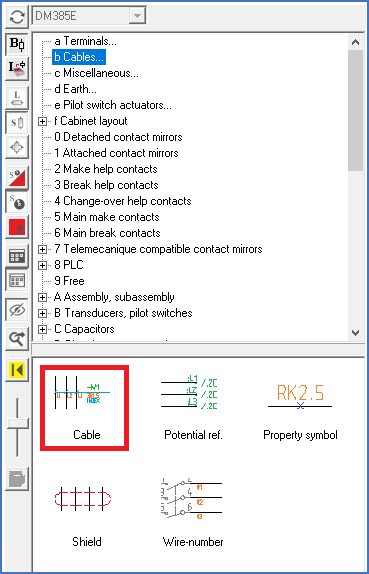|
<< Click to Display Table of Contents >> Cable |
  
|
|
<< Click to Display Table of Contents >> Cable |
  
|
The Cable command is a macro that inserts several cable cores at the same time. Inserting cables is quite like inserting terminals.
A complete description of cables in circuit diagrams is found in a topic named Cables.

Figure 811: The “Cable” command in the Symbol Insert Tool
Each cable core is defined by a help symbol of its own. This makes it possible to spread the cable cores of a cable on multiple drawing sheets without creating any problems.
The first time that you use the Cable command for a given cable, you not only insert help symbols for the cable cores, but also a main symbol with an index and an attribute for electrical data to specify the cable type. Accordingly, cables can be included in device lists if you like.
For these reasons, the Cable command has two main options:
•New is used the first time you draw cable cores for a given cable. You will then insert a main symbol as well.
•Add is used when you add cable cores to a cable that you have already started somewhere else, for instance in another drawing sheet. When you use the Add option, no main symbol will be inserted.
Please refer to the topic listed below for a complete description of the Cable macro and everything else you need to know about cables in cadett ELSA.